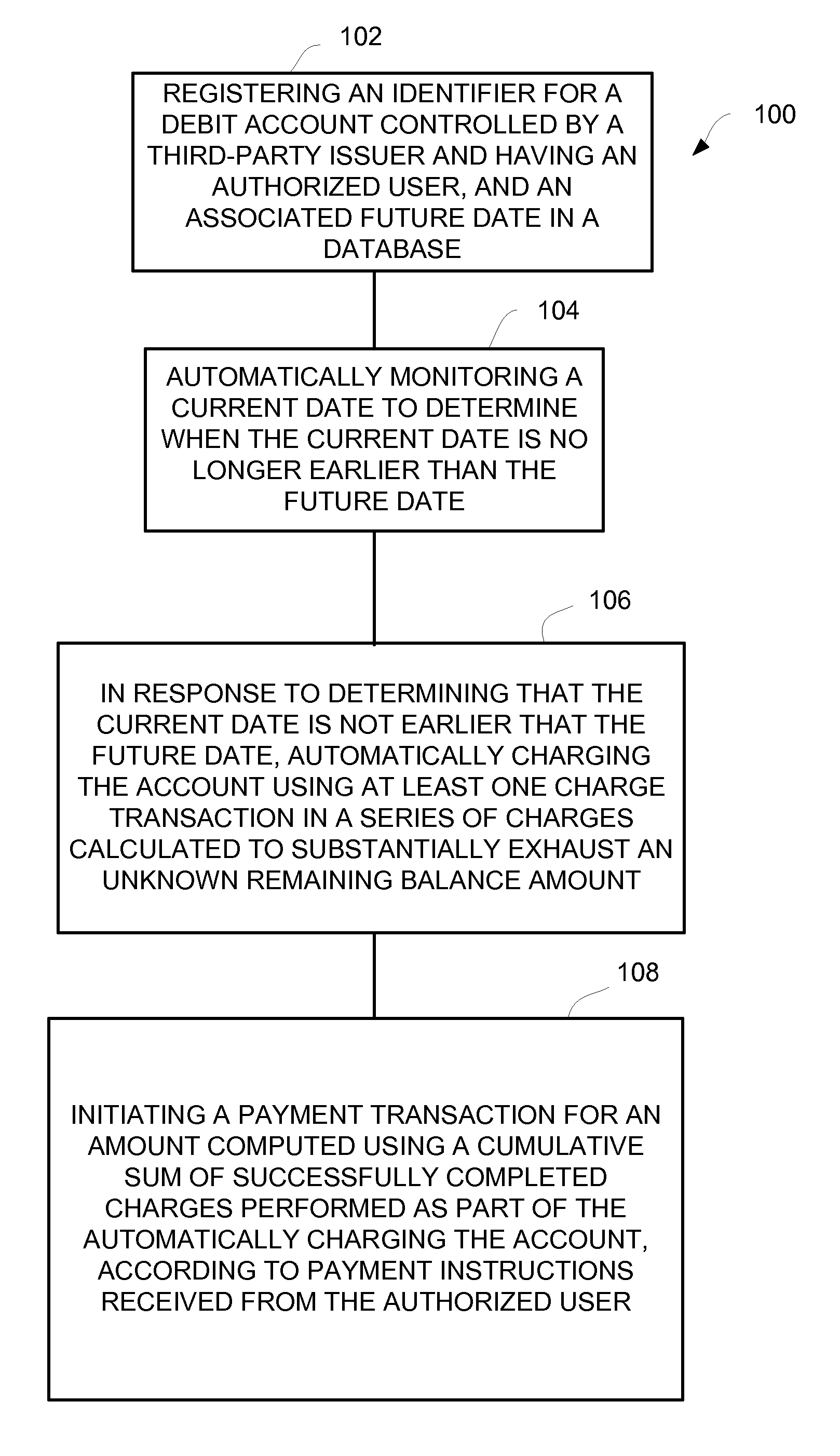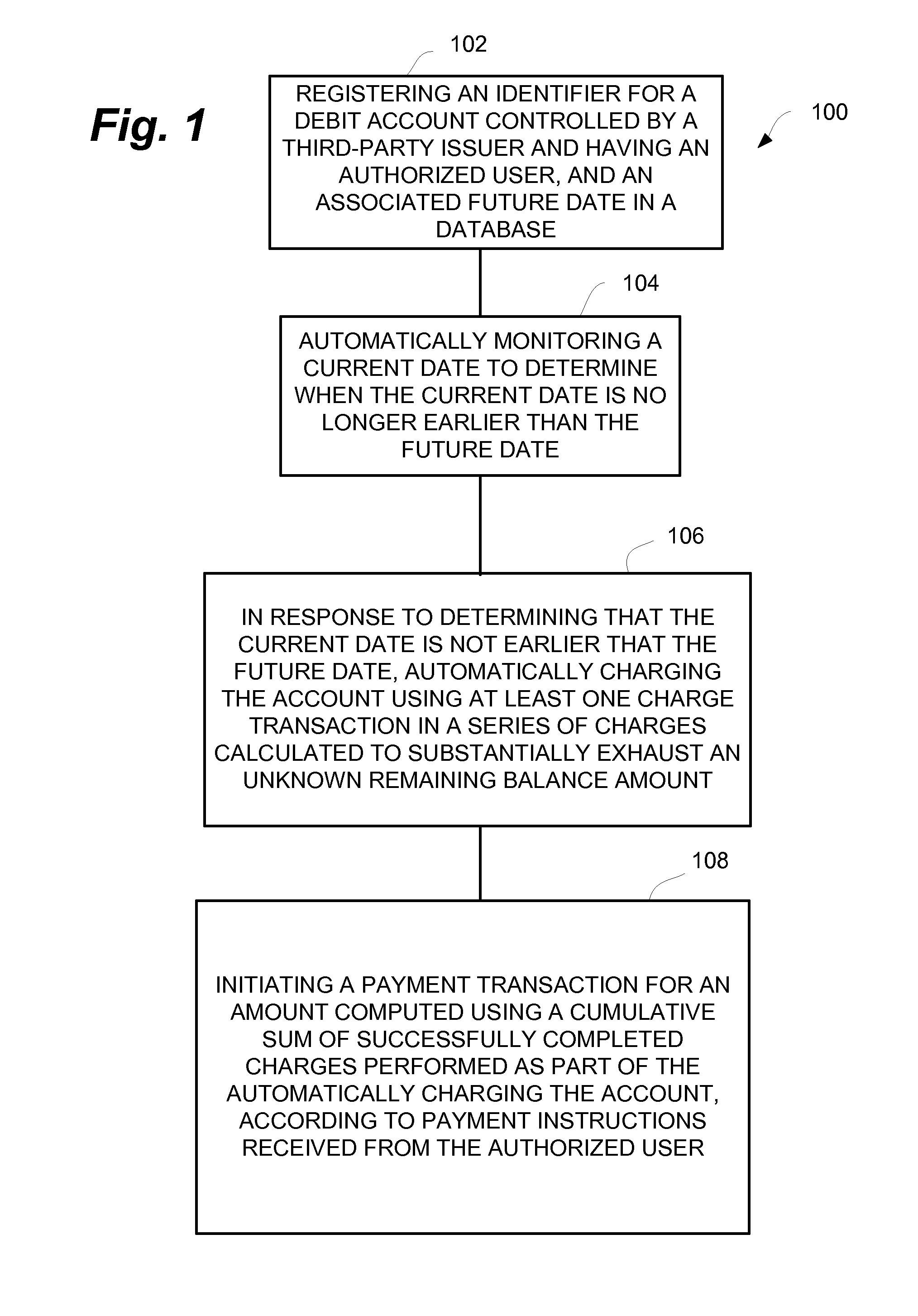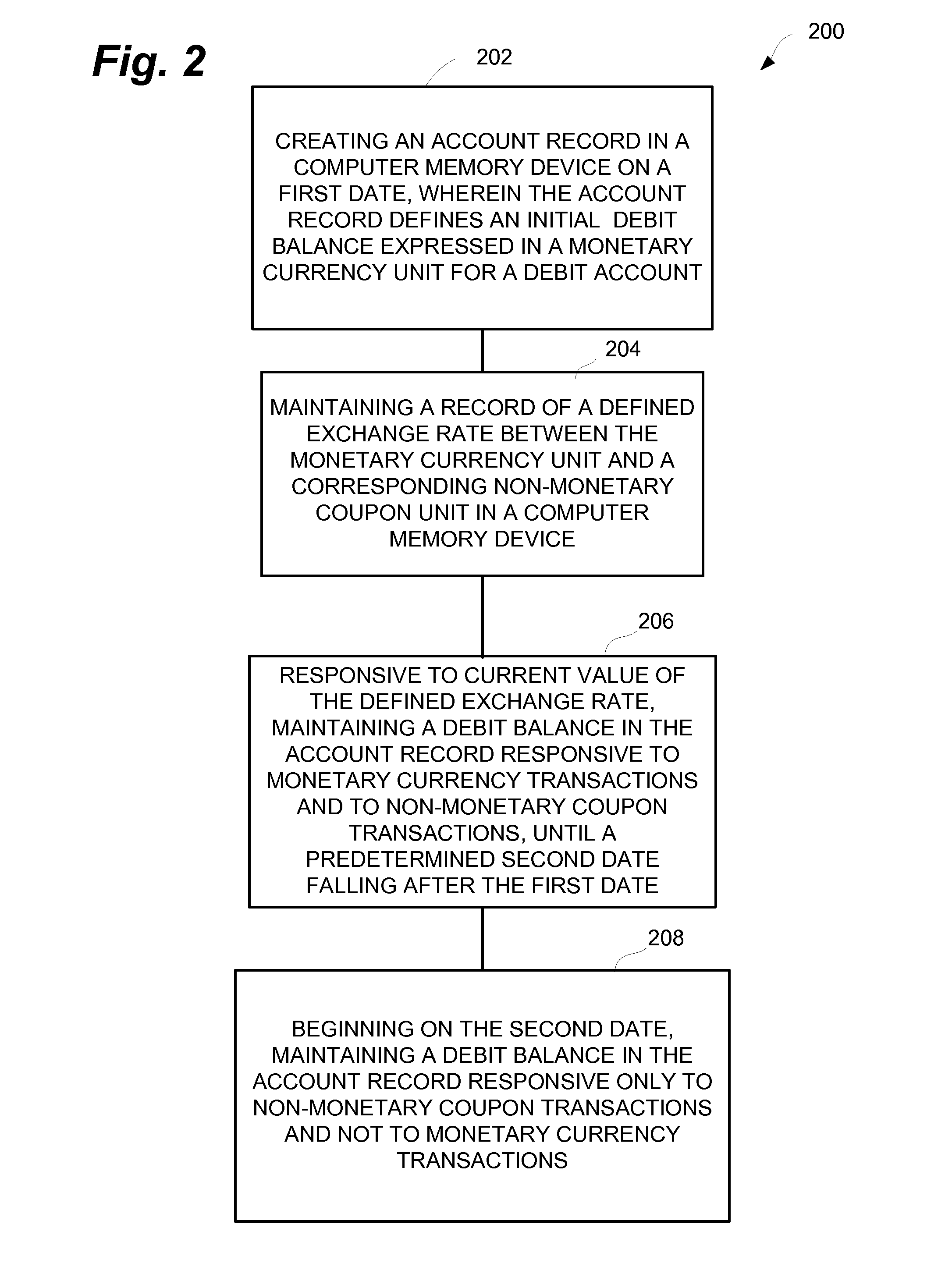Conditional balance management for non-issuer debit instruments
a debit instrument and conditional balance technology, applied in the field of managing a credit balance in a debit account, can solve the problems of inconvenient non-issuers, affecting the debit card holders, and remaining debit balances that sit idle, etc., and achieve the effect of convenient recapture of a greater portion of unused credit balances
- Summary
- Abstract
- Description
- Claims
- Application Information
AI Technical Summary
Benefits of technology
Problems solved by technology
Method used
Image
Examples
Embodiment Construction
[0022]The present disclosure provides a system, apparatus and method for managing handling unused credit balances in payment card. The present technological solutions enable consumers and other non-issuers of debit accounts to conveniently recapture a greater portion of unused credit balances, even when such balances are under the control of an issuer that is unwilling or unable to simply refund the unused balance in a convenient manner. These solutions do not depend on the cooperation of the debit account issuer to take any actions for a refund of an unused balance, or even to disclose a remaining balance.
[0023]In general, the method disclosed herein may be implemented using card reading devices, merchant terminals, computer servers, data storage hardware, communications hardware, and related hardware and software to carry out the actions and operation described herein. A central server or servers may be programmed using software encoded in a computer-readable media to perform cert...
PUM
 Login to View More
Login to View More Abstract
Description
Claims
Application Information
 Login to View More
Login to View More - R&D
- Intellectual Property
- Life Sciences
- Materials
- Tech Scout
- Unparalleled Data Quality
- Higher Quality Content
- 60% Fewer Hallucinations
Browse by: Latest US Patents, China's latest patents, Technical Efficacy Thesaurus, Application Domain, Technology Topic, Popular Technical Reports.
© 2025 PatSnap. All rights reserved.Legal|Privacy policy|Modern Slavery Act Transparency Statement|Sitemap|About US| Contact US: help@patsnap.com



